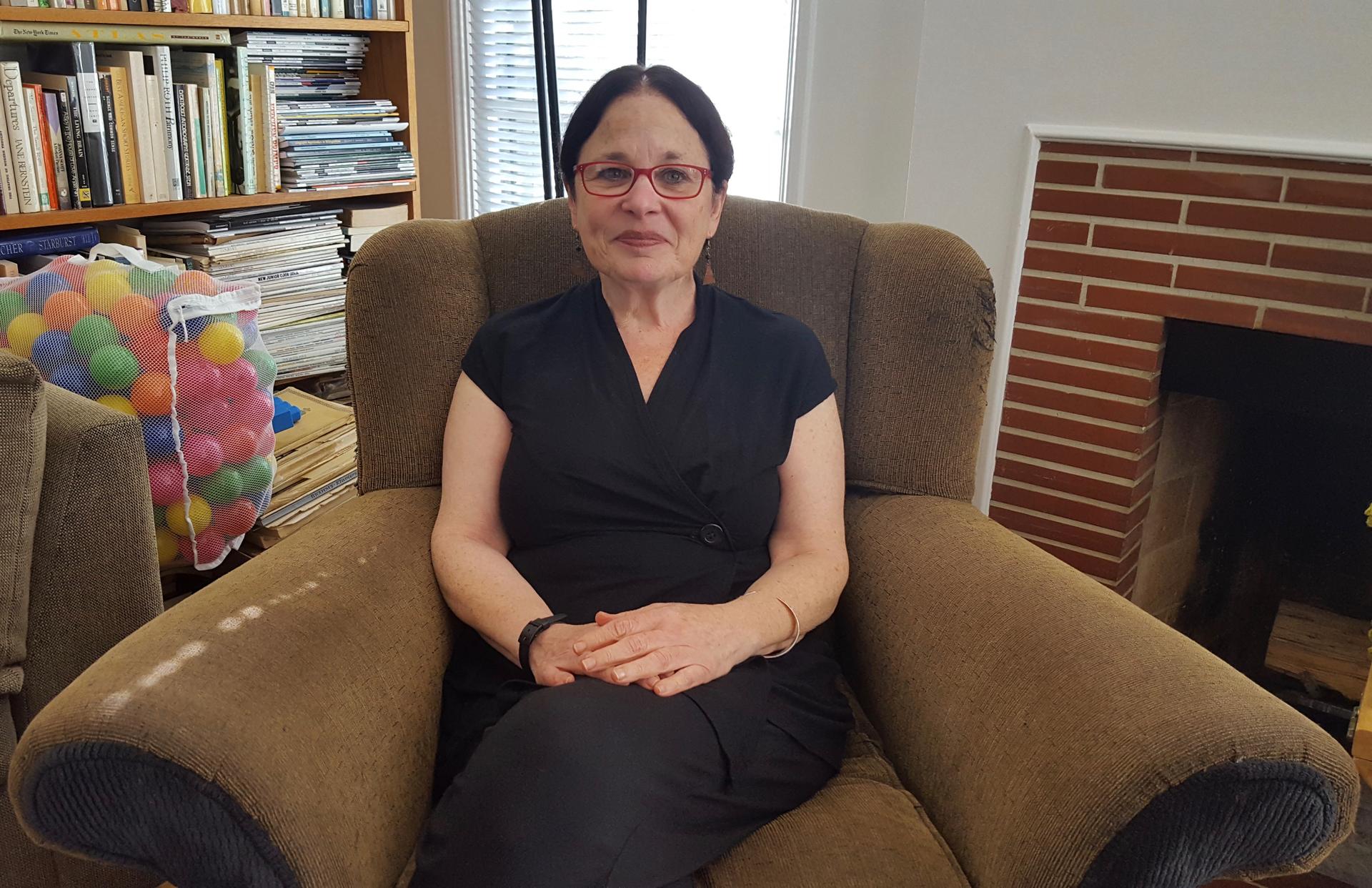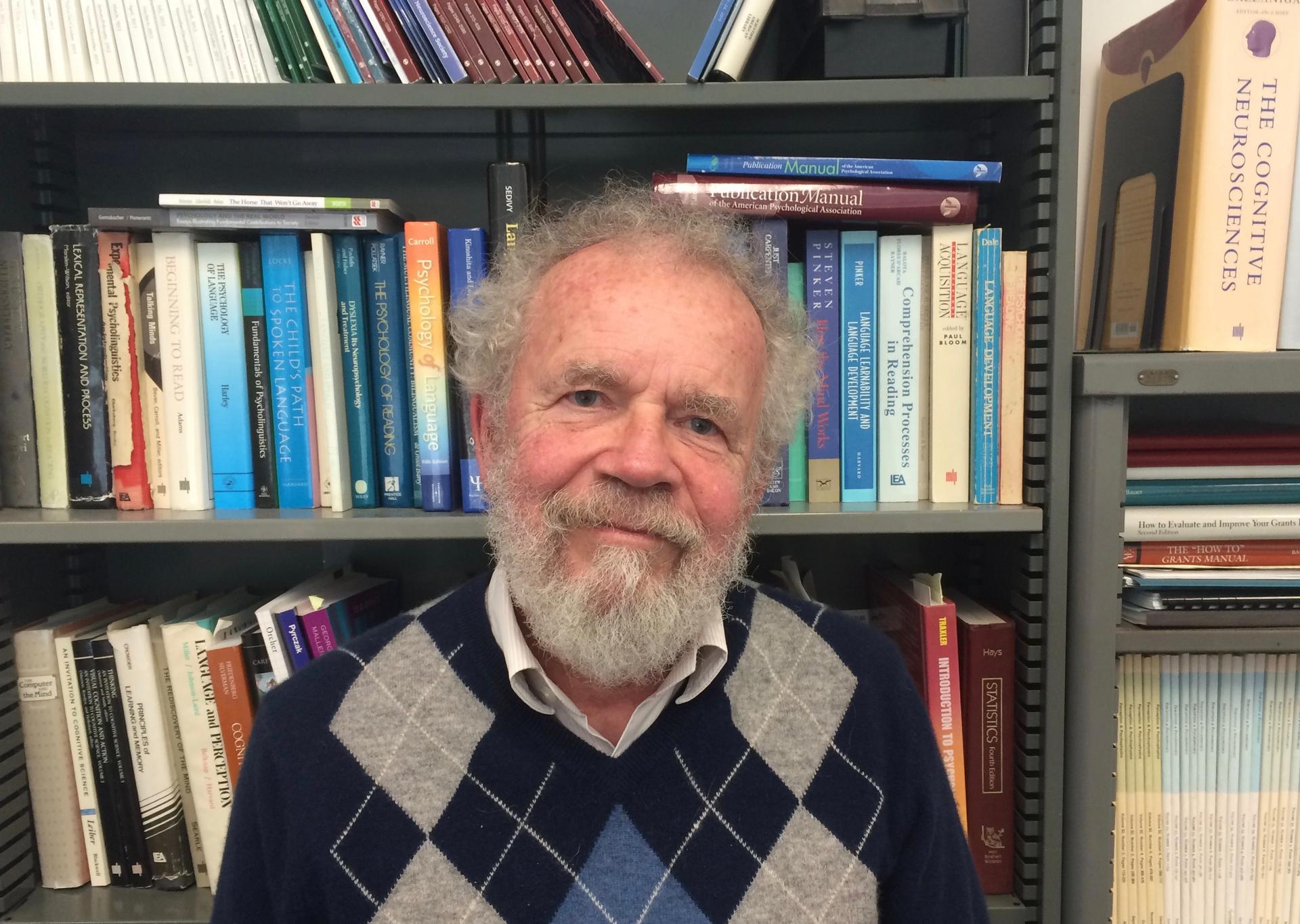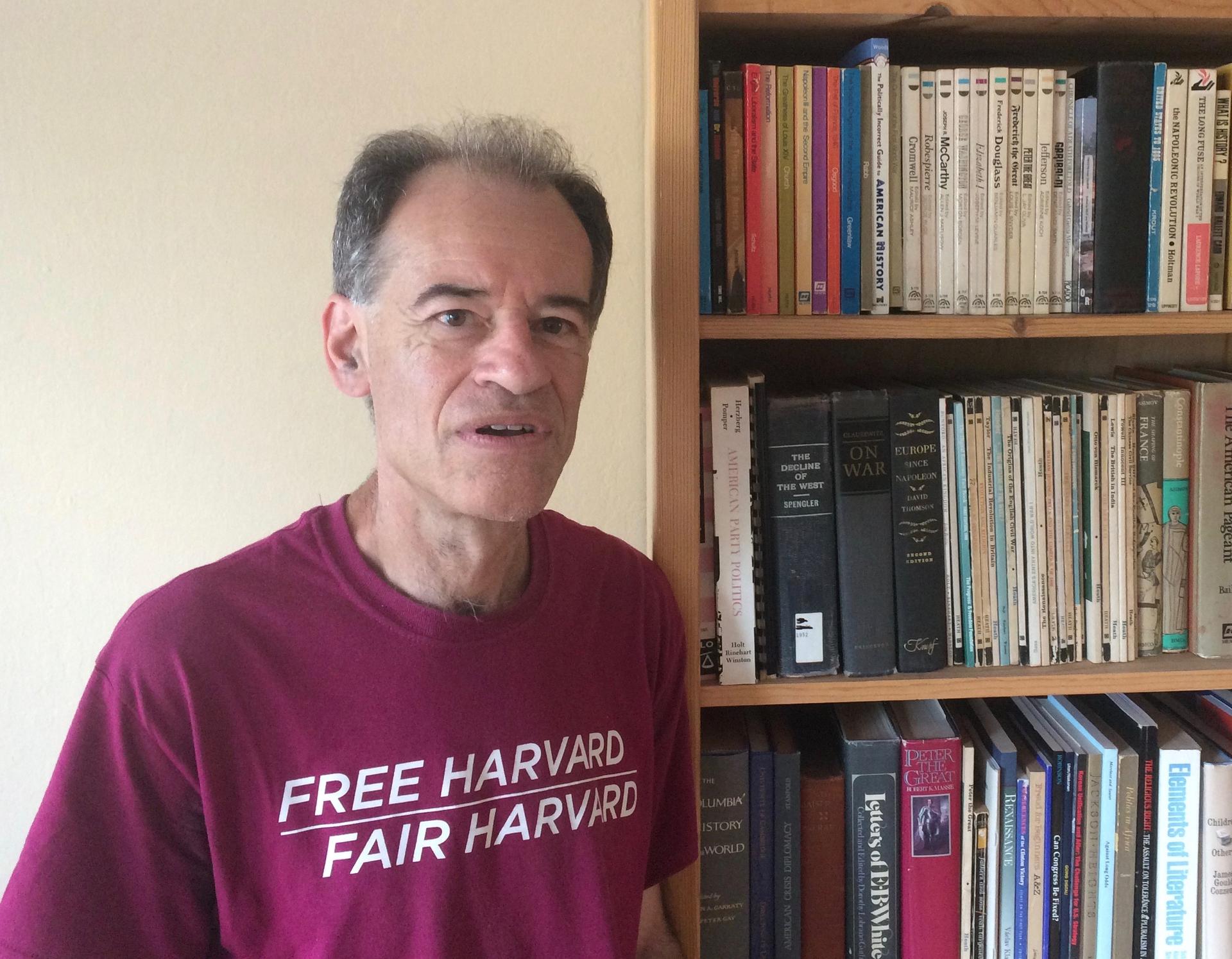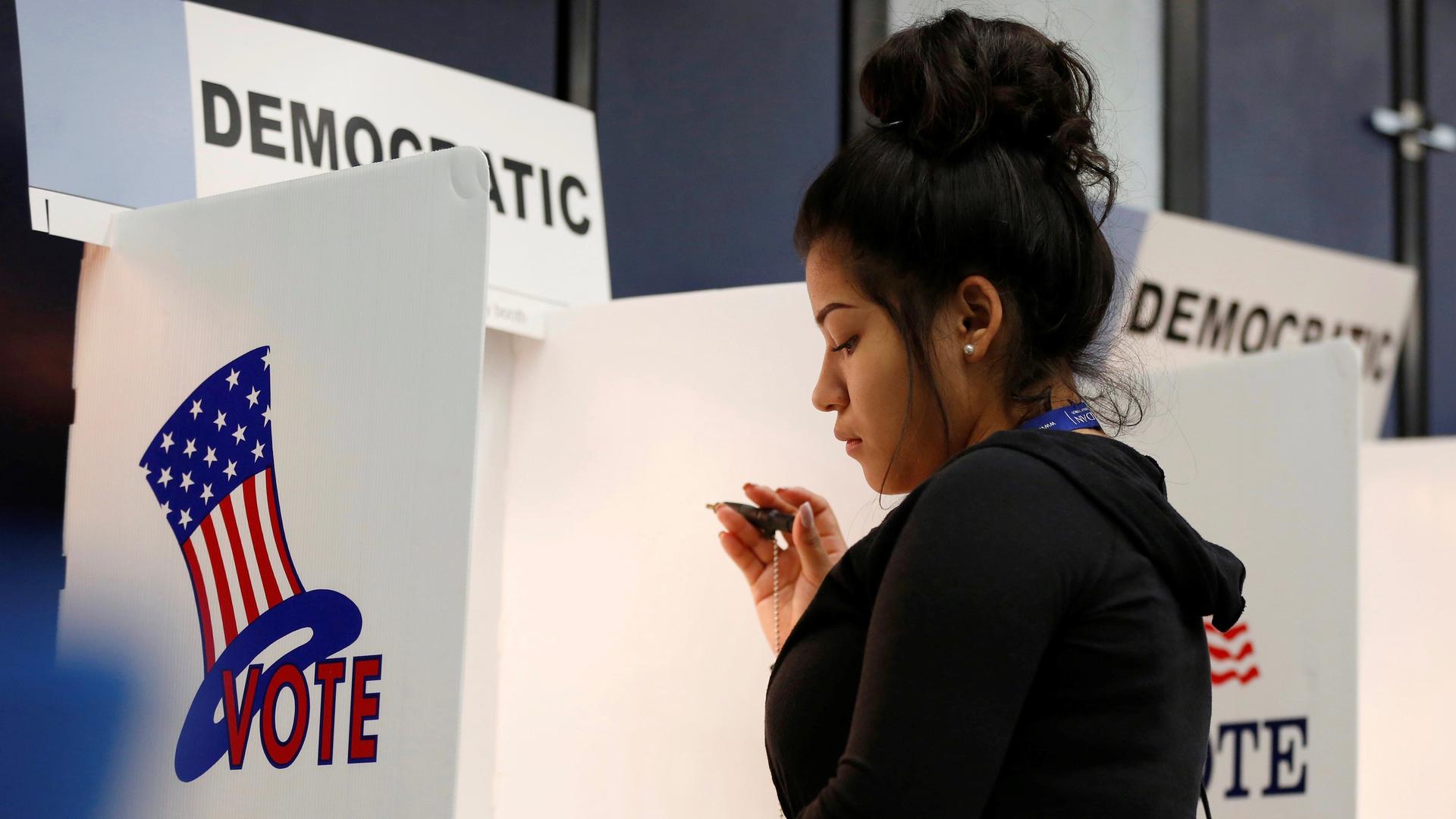Should kids be learning in more than one language? Californians just decided “yes.”
Kimberly Medina, 19, votes during the U.S. presidential primary election at Gates Street Elementary School in Los Angeles, California, on June 7, 2016. Californians will vote Nov. 8 on a ballot measure that seeks to overturn a ban on bilingual education.
Eighteen years ago Californians voted to prohibit most bilingual education. This week, California voters spoke up for bilingualism: 72 percent of voters overturned the ban by passing a law called Prop 58.
In the intervening years, there has been a vast amount of academic research into the bilingual brain.
The World in Words podcast asked me to find out more about this research.
The question of whether being bilingual carries any advantage is, at least in the US, the subject of a heated discussion. It’s not a simple debate of pros versus cons, according to Thomas Bak, a cognitive neuroscientist at the University of Edinburgh. “If we approach a topic as complex as bilingualism,” he says, “to believe that you can practically give a simple 'yes' and 'no' answer, is for me quite naïve.”

To break down that complexity, UC Riverside psycholinguist Judith Kroll says a good starting place is to know that in the bilingual brain, both languages are active at all times, even when just one of those languages is being spoken. “Bilinguals develop exquisite control to be able to master and regulate the use of the two languages,” she says.
This control allows bilingual people to switch between their languages, select one language while suppressing the other and focus on what they’re communicating in the moment.
“And the idea is that control isn’t necessarily limited to language itself but may spill over into other domains of cognitive function,” Kroll explains, including ignoring irrelevant information and paying attention to what’s useful, or juggling different tasks. Kroll says these abilities can develop in babies as young as 7 months old.
And neuroscientist Bak adds that there may be big payoffs for bilinguals much later in life, too. “I was involved in studies,” he says, “showing that people who speak more than one language have slower cognitive aging, have also four-and-a-half years later onset of dementia, and recover faster after stroke.” Some of these benefits may apply not just to those who grow up bilingual, but also those who learn another language as adults.
These studies are part of a large body of work published over the last two decades that reveal an about-face in how we think about bilingualism in the United States. It used to be viewed with suspicion — as an impediment to learning. Now bilingualism is seen as beneficial to some degree. Though, not by everyone.

Recently, Ken Paap, a cognitive psychologist at San Francisco State University, has been critiquing studies that demonstrate bilingual advantage.
He argues that the control required to master and deploy two languages doesn’t necessarily transfer to other domains. He questions the demographics of the populations being tested. And he says that if researchers don’t detect a bilingual advantage in a particular study, “they’re likely to just place the results of their study in their file drawer and never attempt to publish it. Likewise, reviewers and editors, their typical reaction is, ‘Well, that’s pretty boring.’ And those manuscripts are likely to be rejected.”
Initially, Bak welcomed these criticisms. “Debate is healthy in science, it’s necessary,” he allowed. But Bak says he and other researchers have responded to Paap with studies that have nipped his complaints in the bud. Still, Paap’s persisted in vocalizing his same doubts. Bak says it’s time to move on.
Yet Paap’s not alone in his critiques. Christiane Fellbaum, a computational linguist at Princeton, says there’s conflicting evidence when it comes to studies examining bilingual advantage. “Almost all experiments that I have seen are flawed,” she says. “The number of participants tends to be small. Virtually no two bi- or multilinguals have identical profiles, so as a consequence, it’s difficult, if not impossible, to set up a reproducible experiment.”
Psycholinguist Kroll takes exception with that statement. She says, “It does seem to me that there are naysayers who are willing to take a couple of failures to replicate to essentially destroy the entire field, to dismiss all of the rest of the evidence.”
To be fair, Fellbaum isn’t out to destroy the entire field, and she says bilingualism may indeed have some advantages.
So does all this back and forth amount to anything more than academic infighting? Well, the answer to that question is something folks agree on:
“I think it’s the potential implications for public policy decisions that we make as a society,” Paap says. And Thomas Bak says, “Our science — it is done in the society we live in.”

This is where we get to the election in California. A Prop 58 would have reversed an initiative passed in 1998 that made bilingual education programs in the state’s public schools a rarity. Ron Unz, a software developer and theoretical physicist by training, was one of the chief organizers of that campaign, aimed largely at an immigrant Latino population.
“The way to make a child from that background bilingual is for the schools to teach them what they do not know, which is English,” Unz says, “ [rather] than for the schools to just teach them what they already know, which is Spanish.”
The ballot proposition in 1998 passed 61 percent to 39 percent. California was a different place then, and there was still a lot of mistrust of bilingualism. There was also this belief that kids shouldn’t be allowed to learn in their native language because if they did, they’d never learn English.
The research suggesting a possible bilingual edge has helped change that perception, as well as the fact that California has become much more multi-ethnic and multilingual since the '90s.
Still, Unz asserts the educational approach he championed has been a success.
He says, “The test scores of over a million immigrant students in California after four years increased by 30 percent, 50 percent, even 100 percent."
However, some attribute these increases to score inflation that accompanied a new standardized test, which was introduced at the same time as the law discouraging bilingual education.
Plus, there are all the new findings on bilingualism's benefits.
For instance, researchers have found some evidence that bilinguals are better learners. Take a study that Bak conducted with a group of Scottish elementary-schoolers. Most kids in Scotland learn in English only, but a small number of them learn in both English and Scottish Gaelic.
“Kids who are taught both in English and Gaelic are better in English spelling than kids that are only taught in English,” Bak explains. “So kids who learn two languages — their English spelling gets better.”
Bak speaks seven languages himself. He says the debate over bilingual education in California has little resonance in countries where speaking more than one language is unexceptional.
“If we simply go across the world,” he says, “we will find that in many countries bilingual education, or multilingual education, is absolutely the norm with very good results.”
This brings us to an important point. The larger academic controversy over bilingual advantage occurs primarily in places where being monolingual is the norm.
Bak says, “The biggest opposition comes from countries where there’s also a very strong negative attitude to bilingualism in society — ingrained mistrust against anybody who speaks another language than their own.”
And this casts the opposition to bilingual education in an unfortunate light, admits Christiane Fellbaum. “It comes down to anti-foreign sentiment and perhaps even racism — it’s a very strong word, but I will use it here,” she says. “People are anxious about immigrants, and there is a reasonably clearly defined target population.”
She means the Latino community. Unz — the one who helped get the 1998 initiative passed — says that’s nonsense. And he says that he’s not concerned the overturn of the bilingual education ban will last.
“Latino parents would be very unhappy,” Unz says, “and they’d make a fuss about it, and the whole attempt would very quickly collapse.”
California voters let us know where they stand on Tuesday. It’ll take the research community somewhat longer to come to a conclusion. But Fellbaum, for one — even with her reservations about the extent of bilingual advantage — always offers couples who speak different languages the same advice on raising their kids.
“I say by all means bring them up bilingually because your children will relate to both of your heritage and be able to look at the world with different perspectives."
And with that kind of openness, who knows — maybe those kids will be the ones to resolve these longstanding debates.
You can follow The World in Words stories on Facebook or subscribe to the podcast on iTunes.
